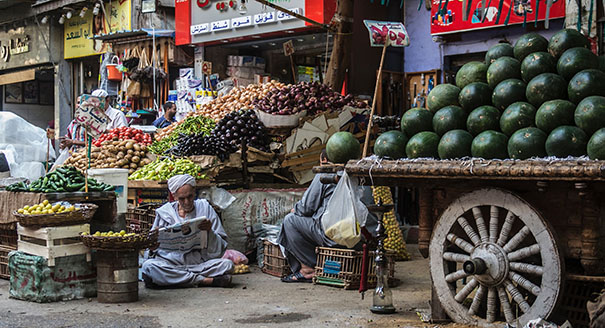In fiscal year 2017–2018, ending in June, Egypt’s GDP grew by 5.3 percent. This was the highest growth rate since 2007–2008, when the economy grew by 7.2 percent, just before it was hit by the global economic crisis and political instability starting in early 2011.
However, despite such improvement, growth in Egypt is neither inclusive nor sustainable. Indeed, most Egyptians are feeling the burden of soaring prices and low incomes. That is because in November 2016 the government introduced an austerity program and devalued the Egyptian pound within the framework of a $12 billion loan agreement with the International Monetary Fund (IMF).
In a statement on September 23, the managing director of the IMF, Christine Lagarde, said that the Egyptian economy was showing signs of recovery as one of the highest growing economies in the Middle East. She promised that the measures agreed with the IMF would bring inclusive growth and help create jobs, while also ensuring that adequate resources would be available for social protection.
Egypt has a history of high economic growth rates alongside the poor distribution of the fruits of growth, as was illustrated during first decade of the millennium. Indeed, this was one of the factors that led to the uprising in January 2011. In 2018 economic growth returned, accompanied by a reduction in unemployment, which the government considers a sign of inclusive growth. Unemployment fell to 9.9 percent by the end of June 2018, the lowest level in years, as the economy created new jobs, mainly in the fishing, agriculture, education, and retail-wholesale sectors. However, the new jobs have tended to be seasonal, while the number of sustainable jobs in sectors such as industry grew much more slowly.
Most importantly, economic growth was mainly driven by the extractions sector, which grew by 8.6 percent during the 2017–2018 fiscal year and contributed 15.8 percent to the annual overall growth rate. The gas sector attracted most foreign direct investment in Egypt, a pattern that is expected to continue. However, in terms of job creation it is important to underline that the sector is not labor intensive, again qualifying the inclusiveness of growth.
A better performance in the tourism sector might have helped restore some of the jobs lost during the years of political instability. The sector recorded an annual growth rate of 36 percent in the first nine months of the fiscal year and was responsible for 0.7 percent of the GDP growth rate. However, the job numbers in real economy sectors, including industry and agriculture, told a different story. The sectors showed some quarter on quarter slowdowns during the fiscal year, according to available official data.
Inclusive growth, sometimes referred to as pro-poor growth, is not exclusively about creating jobs, regardless of how decent and sustainable these are. Rather, it is the pace and pattern of growth that are critical for achieving a high, sustainable record of growth, as well as a reduction in the poverty level. Inclusiveness also refers to equity, equality of opportunity, and protection in the market.
As a percentage of GDP, Egypt’s expenditures on social protection and safety nets were below regional and global averages in 2016, while the severe inflation shocks that accompanied the IMF program may have pushed millions of Egyptians below the poverty line. The expansion of a conditional cash transfer program to the poor in the previous two years failed to bridge the gap. The situation was made worse by the increasing cost of public services, including transportation, water, and electricity.
Moreover, experts at CAPMAS, the government’s official statistical agency, suggest that poverty may have risen to 35 percent in 2017, from 27.8 percent in 2015, before the IMF program began, even after updating the national poverty line for inflation. However, because the assessment was preliminary, the poverty level could be even higher. More austerity measures are yet to come, according to phase four of the program, threatening to make things worse for vulnerable and low-income Egyptians. The government is expected to raise energy prices at least once more in 2019, slashing subsidies to meet the IMF targets for narrowing the budget deficit.
The austerity package has also hit different aspects of social spending, including education and health. Public expenditure on both sectors declined as a percentage of GDP to only 1.34 percent and 2.6 percent, respectively. The Egyptian government and the IMF consider education and health to be crucial pillars of inclusive growth and equality of opportunity.
In October 2011, Massood Ahmed, who was then the director of the IMF’s Middle East and Central Asia Department, concluded that the clearest lesson of the Arab uprisings was that the sustainability of growth was conditioned by how broadly its gains were shared and to what extent this was accompanied by social policies for the most vulnerable. Now, Egypt, has to fulfill such a requirement while facing very substantial and expanding domestic and external debts, as well as low levels of investment. The Egyptian government has made its choice by wholeheartedly adopting a package of policies pushing hard in the opposite direction of sustainable growth.






